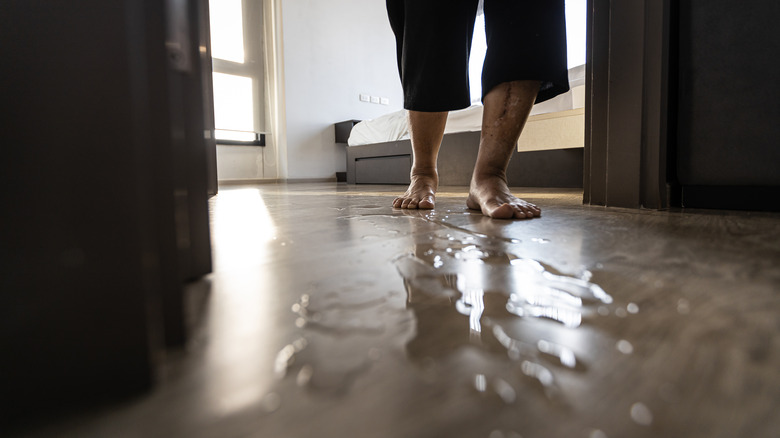How To Quickly Repair Water-Damaged Laminate Flooring
Laminate flooring water damage typically occurs as water moves into the gaps between pieces of flooring before penetrating the layers of thin, pressed wood board that make up the flooring. This design means it's not possible to create a type of laminate flooring that is completely waterproof or water resistant, so using laminate flooring in an area where it could experience excessive water damage, like in a bathroom, is generally a poor idea. This type of flooring is not a long-lasting option in areas with significant moisture, as the different layers inside the planks can pull apart when they swell after absorbing water, making the flooring buckle or warp.
Should someone spill a drink on your laminate flooring, or should your pet have an accident on it, it's important to clean up the moisture as quickly as possible. If you don't clean it immediately, some of the liquid could seep between the pieces, leading to delaminating of the layers. But if water damage does occur, here's how you can repair your laminate flooring.
How to fix laminate flooring with water damage
As moisture penetrates the layers of laminate flooring, it causes the flooring to swell, becoming noticeably visible with a bubbling of the top layer of the laminate or a raised edge from swelling. To repair a piece of water-damaged laminate flooring, first pop out the piece of laminate and make sure it's totally dry before continuing. Carefully add wood glue to the exposed edge, making sure that it deeply penetrates the layers that seem to be separating. Then use a significant amount of weight or a clamp to force the glued layers tightly together. Remove any excess glue that leaks outside of the edge once you apply the weight or force. Once the glue has dried, place the flooring back into its spot.
If the laminate still looks water-damaged, you may need to replace it. This can be done by either purchasing a new piece of flooring, or by switching a piece out from an inconspicuous part of your space, letting the distorted piece of flooring hide out-of-sight.
Preventing water damage to your laminate flooring
One of the best ways to avoid moisture damage is to take care when cleaning your laminate flooring, and don't use too much water. Limit the amount of moisture you apply to the surface, and wring out any mops you use on the floor before applying it to the surface. You may want to just spray a cleaning solution directly onto the floor to avoid over-saturating the laminate. You can also purchase a special type of mop made for laminate flooring that consists of microfiber fabrics and uses very little water. After cleaning your laminate flooring, dry the area with a microfiber cloth to quickly absorb any excess moisture.
For a longer-term solution to preventing water damage to your laminate flooring, consider applying a polyurethane coating to it. Polyurethane coatings are excellent at repelling water, giving your flooring a water-resistant boost. They are completely clear after they dry, so they shouldn't affect the overall look of the flooring.


